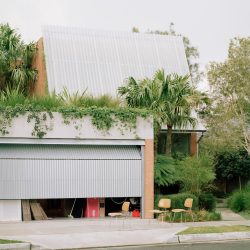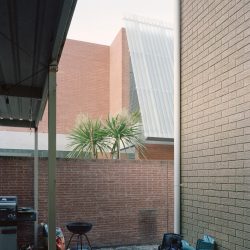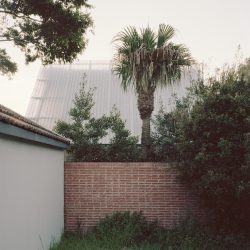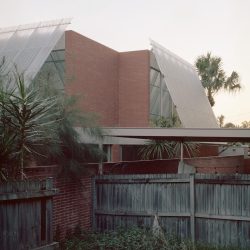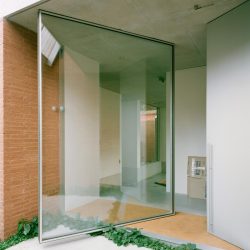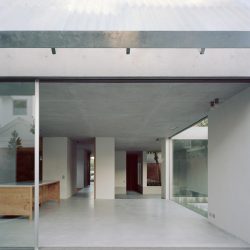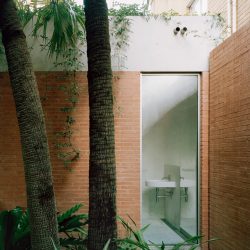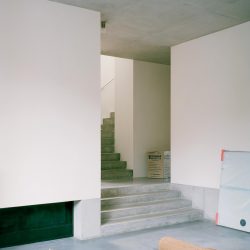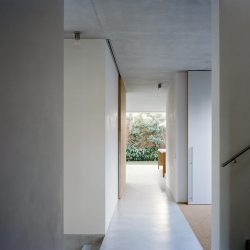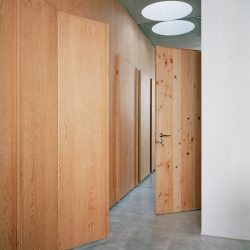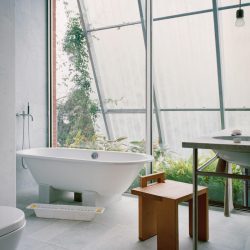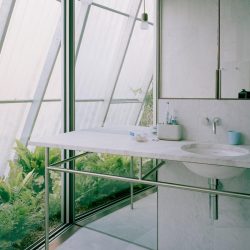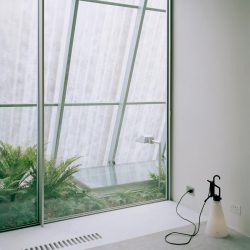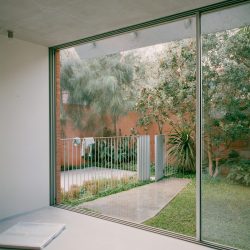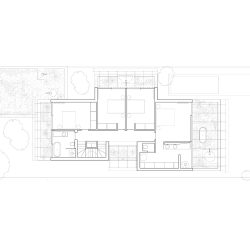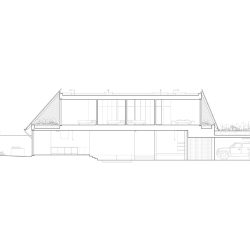
Anthony Gill Architects . photos: © Rory Gardiner with Colby Vexler
The project brief was to design a new home for a builder and his young family on the long sandy flat that runs from Bondi to the harbour at Rose Bay. The block is large for North Bondi at 415sqm and is located one house back from a busy street corner with apartments and shopfronts. This proximity means a mix of surrounding housing types and the site is heavily overlooked. There was an existing single storey bungalow on the site that was carefully deconstructed to enable the re-use of building fabric, including the bricks and timber roof framing.
The potential for gardens to help filter neighbouring conditions and provide softness was a primary focus for the project. Early explorations with consultants enabled us to design based on a clear understanding of what the gardens would be like and how we could rely on them to address privacy and protection, carefully considering the exposure of each room.
In plan, the rooms step and stagger to create distinct garden spaces that provide relief to the overall experience, bringing light and ventilation deep into the plan. The interiors are interrelated with each adjacent garden, offering privacy and different conditions to each room. In section, there is a 4-step level change that solves the site’s slight slope from backyard to the street. This results in a tall lounge room, sunken into the site with an expressed retaining wall to the slightly
raised garden level.
The entry path moves through an unfenced garden to the street, down the side of the house arriving at the centre of the plan. The central entry neatly splits the plan into the private areas and the public living spaces that connect with the outdoors.
The first-floor planning is more compact with a circulation spine connecting the four bedrooms and bathroom. Each room enjoys full width and height openings onto densely-planted roof gardens that grow feverishly under sloping fibreglass privacy screens. These vary in steepness based on setback controls that determine the brick and concrete structure behind.
In terms of materiality, the red brick was selected to respond to context. The back streets of Bondi are a messy mix of density and quality but brick, often red, is common. The brick selected for this project was discontinued and the final design needed to reflect the quantity available. The bricks from the original bungalow were used to build the internal skin of brickwork for much of the house, finished in a natural render, unpainted and sealed with wax. Oregon roof framing was re-used for the kitchen island and all internal doors, also finished with wax. Compared to the original, the site has increased shade through new native planting. The house has a 9.3kW solar system and battery, electric car charging and a 7,200L water tank.
_

